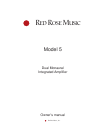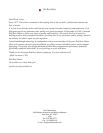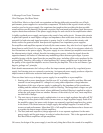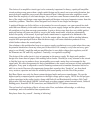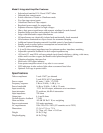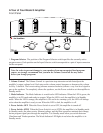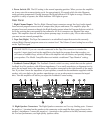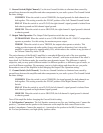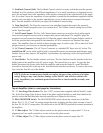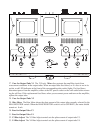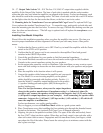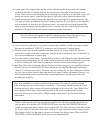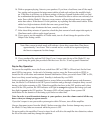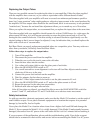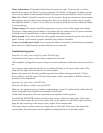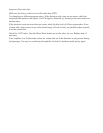The choice of an amplifier circuit type is also extremely important. In theory, a push-pull amplifier
circuit produces more power than a single-ended design and it cancels out even-order distortion, but
most push-pull amplifiers never reach this theoretical ideal. Although most tube amplifiers sound
better than the majority of solid state designs, they can leave some listeners unsatisfied; some mem-
bers of the single-end design camp argue that push-pull designs strip away harmonic texture from the
sound they produce. Therefore, those designers have chosen to use single-end designs.
A push-pull design can fail to deliver on its promise for several reasons: our own research has indi-
cated that non-linearity in the audio transformer, the power supply design and the phase inverter may
all contribute to less-than-accurate presentation. A gain or driver stage that does not exhibit perfect
push-pull action will cause an offset to occur in the audio transformer, which can substantially
reduce the quality of the sound. A push-pull audio transformer is supposed to be balanced to the
center-tap point where the high voltage is fed to the output tubes; but any shift in winding balance,
coupled with poor push-pull action from the driver stage, will cause distortion products to rise,
which further reduces the sound quality.
Our solution to this problem has been to use power-supply regulation at every point where there may
be potential interference from any other part of the circuit. For example, every tube and every gain
stage in our Model 1 amplifier and pre-amplifiers has its own high-voltage plate regulator, and all
the filaments are DC and fully regulated – basically, we regulate everything!
The design of the audio circuit is just as important as the power supply. We begin each product
design on a clean sheet of paper, with nothing left to chance. We analyze every element in the circuit
to find the best way to produce clean, incorruptible power and a noise-free environment for the
signal path. We select components for their contribution to the sound, not because of their audiophile
pedigrees. Every part is subjected to careful listening sessions and committee discussion before we
add it to a circuit. Because all components change their sound as they “break in”, we also check
every resistor, capacitor and tube for reliability and sound quality over the life of the product.
Red Rose Music uses only the finest custom-designed audio and power transformers. We use the
highest quality computer-grade capacitors in the high-voltage power supply, MIT® tin-foil polypro-
pylene capacitors in the audio circuits, along with Holco® and Roederstein® resistors, Rel-Cap®
polystyrene .090-inch thick SMOBC (solder mask over bare copper) printed circuit boards, Cardas®
binding posts, Neutrik® XLR Connectors, and Hubbell® IEC 320 power connectors.
The end result of our design effort is a lower noise floor, resolution without edge, a wide deep
soundstage, and well-controlled bass reproduction.
But please listen for yourself…hearing is believing!



